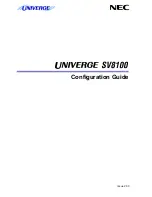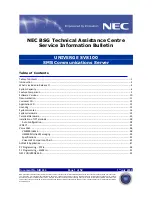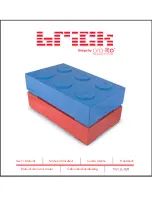
7914DS3KPlanning_090710.fm
Draft Document for Review March 28, 2011 12:24 pm
78
IBM System Storage DS3500: Introduction and Implementation Guide
With the DS3500 Storage System, you can use either basic or dynamic disks, depending
upon your needs and requirements (certain features might not be supported when using
dynamic disks). There are cases for both disk types; this depends on your individual
circumstances. In certain large installations, where you might have the requirement to span or
stripe logical drives and controllers to balance the work load, dynamic disk might be your only
choice. For smaller to mid-size installations, you might be able to simplify and just use basic
disks, which is entirely dependent upon your environment and your choice of disk system has
to be made on those circumstances.
When using the DS3500 Storage System, the use of software mirroring and software RAID 5
is not required. Instead, configure the storage on the DS3500 Storage System for the
redundancy level required.
If you need greater performance and more balanced systems, you have two options:
If you want to have the UNIX-like capabilities of LVM, you can purchase and use the
Veritas Storage Foundation (from Symantec) suite or a similar product. With this product,
you get several features that go beyond LDM. Volume Manager does not just replace the
Microsoft Management Console (MMC) snap-in; it adds a much more sophisticated set of
storage services to Windows 2003 and 2008. After Windows is upgraded with Volume
Manager, you are able to manage better multidisk direct server-attached (DAS) storage,
JBODs (just a bunch of disks), Storage Area Networks (SANs), and RAID.
The main benefit is the ability to define sub-disks and disk groups. You can divide a
dynamic disk into one or more sub-disks. A sub-disk is a set of contiguous disk blocks that
represent a specific portion of a dynamic disk, which is mapped to a specific region of a
physical disk. A sub-disk is a portion of a dynamic disk's public region.
A sub-disk is the smallest unit of storage in Volume Manager. Therefore, sub-disks are the
building blocks for Volume Manager arrays. A sub-disk can be compared to a physical
partition. With disk groups, you can organize disks into logical collections.
Assign disks to disk groups for management purposes, such as to hold the data for a
specific application or set of applications. A disk group can be compared to a volume
group. By using these concepts, you can make a disk group with more LUNs that are
spread among the controllers.
Using Veritas Volume Manager and tuning the databases and applications goes beyond
the scope of this guide. Browse the application vendor sites and vendor documentation for
more information.
For Veritas Volume Manager (VxVM), see:
http://www.symantec.com/enterprise/products/overview.jsp?pcid=1020&pvid=203_1
You can use the DS3500 Storage System and Windows dynamic disks to spread the
workload between multiple logical drives and controllers, which can be achieved with
spanned, striped, mirrored, or RAID 5:
– Spanned volumes combine areas of un-allocated space from multiple disks into one
logical volume. The areas of un-allocated space can be various sizes. Spanned
volumes require two disks, and you can use up to 32 disks. If one of the disks
containing a spanned volume fails, the entire volume fails, and all data on the spanned
volume becomes inaccessible.
– Striped volumes can be used to distribute I/O requests across multiple disks. Striped
volumes are composed of stripes of data of equal size written across each disk in the
volume. They are created from equally sized, un-allocated areas on two or more disks.
The size of each stripe is 64 KB and cannot be changed. Striped volumes cannot be
extended and do not offer fault tolerance. If one of the disks containing a striped
volume fails, the entire volume fails, and all data on the striped volume becomes
inaccessible.
Summary of Contents for DS3500
Page 2: ......
Page 5: ...iii Draft Document for Review March 28 2011 12 24 pm 7914edno fm ...
Page 789: ......















































